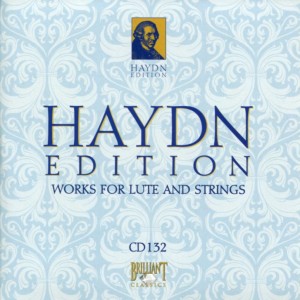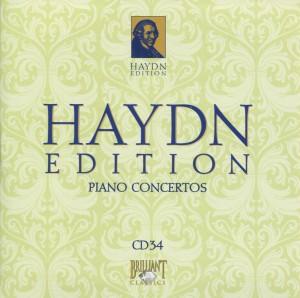 The first notes from the first track of today’s CD are from a guitar-like instrument known as a lute.
The first notes from the first track of today’s CD are from a guitar-like instrument known as a lute.
I had no idea Haydn composed for stringed instruments of that type.
Also, I had no idea that the lute was so revered. For example, the Lute Society has been around 60 years.
“What is a lute?” you ask.
Allow me.
According to its entry on Wikipedia,
Lute can refer generally to any string instrument having the strings running in a plane parallel to the sound table (in the Hornbostel–Sachs system), more specifically to any plucked string instrument with a neck (either fretted or unfretted) and a deep round back, or more specifically to an instrument from the family of European lutes.
The European lute and the modern Near-Eastern oud both descend from a common ancestor via diverging evolutionary paths. The lute is used in a great variety of instrumental music from the Medieval to the late Baroque eras and was the most important instrument for secular music in the Renaissance. It is also an accompanying instrument, especially in vocal works, often realizing a basso continuo or playing a written-out accompaniment. The player of a lute is called a lutenist, lutanist, “lewtist” or lutist, and a maker of lutes (or any string instrument) is referred to as a luthier.
Here’s what it looks like. 
I think I prefer the much shorter definition on the Merriam-Webster site:
a stringed instrument having a large pear-shaped body, a vaulted back, a fretted fingerboard, and a head with tuning pegs which is often angled backward from the neck
“A large pear-shaped body” is the perfect descriptor.
How many strings does the lute have, anyway? I’ve read that they can have up to 20 or 24 strings. Typically, they may have 12. Their strings are arranged in “courses,” of two each. But how many strings a lute has apparently depends on what kind of lute it is.
Regardless, a lute seems like a complicated instrument to play, but one with a lovely sound like that of a Classical guitar. I believe that sound comes from the fact that the strings are “gut” or nylon, and the body is mostly wood. So there’s a lot of resonance and Continue reading

